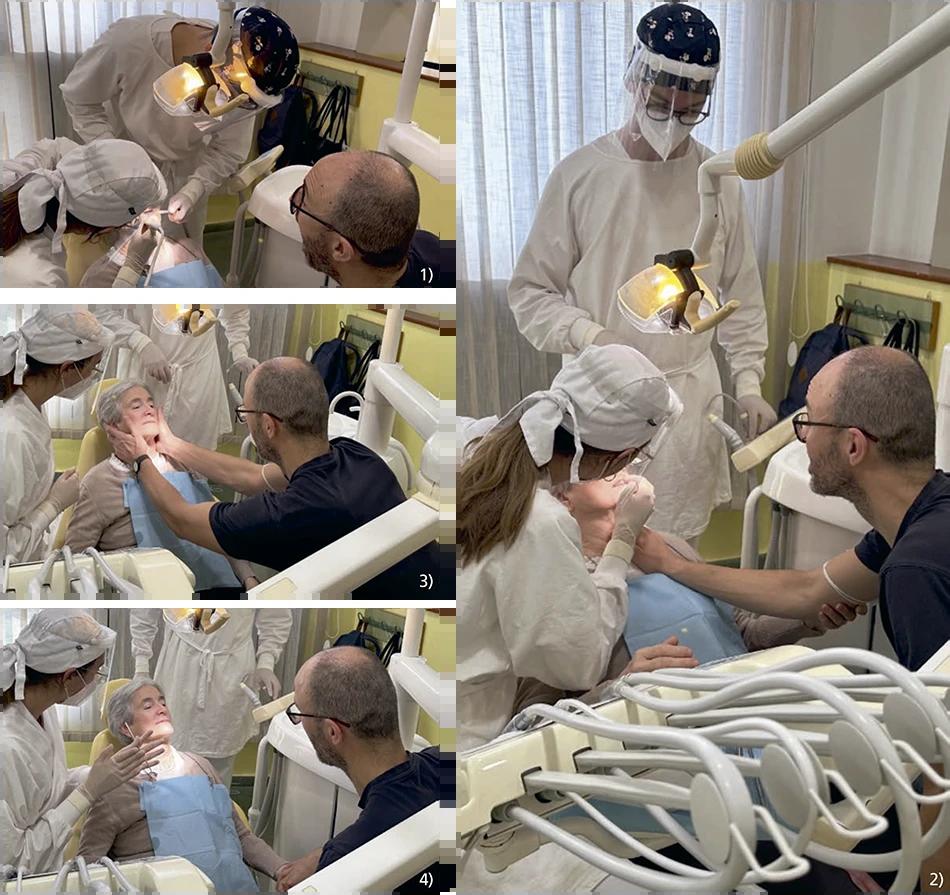The periodontal patient with Alzheimer's disease.From scientific evidence to clinical management.Article from SEPA Perio Clínica.
Članak CREDITED by časopisu SEP Journal.Jorge Moldes, Honda Tayebi, Liz Spanish, Luis Astolfi, Jesús Forest, Hasturk, Pedro Diz i Yago Leira.
There is scientific evidence indicating that periodontitis patients are at high risk of developing neurodegenerative diseases, especially Alzheimer's disease (AD).Experimental studies suggest different biological mechanisms, both infectious and inflammatory, that may explain the relationship between the two pathologies.In the elderly population, these diseases are relatively common and can occur simultaneously.
For this reason, a thorough knowledge of their management is essential for dentists.This review also discusses the evidence between periodontitis and trade from an epidemiological point of view.In addition, a number of medical recommendations on dental care for perphadontal patients are discussed.
Alzheimer's disease is the most important neurodegenerative disease worldwide due to its significant morbidity and mortality and epidemiological importance.Prevalence is estimated at approximately 35 million people worldwide (WHO 2023), rising to 416 million if predromal and preclinical stages of the disease are considered (Gustafsson et al. 2023).This prevalence is increasing proportionally.With increasing lifespan (Scheltens et al. 2021).
AD is caused by the degeneration of neurons in the temporal-parietal cortex, which is responsible for the characteristic clinical symptoms of progressive deterioration of memory, language, and executive functions (Rabinovici et al. 2022).Although the cause of this atrophy is unknown, a number of genetic, environmental, metabolic, and lifestyle factors have been identified as important risk factors.These include the presence of the ApoE4 allele, previous traumatic brain injury, reduced education, hearing loss, diabetes, hypertension, hypercholesterolemia, smoking, poor diet, poor sleep habits, and insufficient physical activity (Monteiro et al. 2023; Rabinovici et al. 2022).
From a pathophysiological point of view, multiple factors contribute to the development of the disease, including neuroinflammation, oxidative stress, mitochondrial dysfunction, and the accumulation of β-amyloid and hyperphosphorylated tau protein, which are considered key mechanisms (Monteiro et al. 2023).
Neuroinflammation is a complex biological response of the central nervous system (CNS) triggered by noxious stimuli.It is mainly mediated by activated glial cells, especially microglial cells and astrocytes, which release pro-inflammatory cytokines, chemokines and reactive oxygen species (Li et al. 2022).While acute neuroinflammation is usually transient and homeostasis must be restored, the persistence of harmful stimuli such as misfolded protein aggregates, cellular debris, or systemic inflammatory signals leads to chronic or dysregulated neuroinflammatory states.These prolonged inflammatory responses contribute to neuronal dysfunction, synaptic loss, disruption of the blood-brain barrier (BBB), and progression neurodegenerative diseases, including AD (Li et al. 2022).
In this context, pathological activation and proliferation of microglial cells and astrocytes, called microgliosis and astrogliosis, respectively, play an important role in maintaining chronic neuroinflammation (Li et al. 2022).These glial cells undergo morphological and functional changes that contribute to a pro-inflammatory state by increasing immune signaling, oxidative stress and altering neuronal homeostasis, thus creating a self-perpetuating cycle that promotes progressive neurodegeneration.
On the other hand, β-amilaid is a peptide fragment derived from amiloid precursor protein (app) which, when accumulated in the brain, forms extra pleasant plaques (Rabinovici et al. 2022).Instead, Tau is a protein that normally stabilizes microtubules in neurons.However, when Tau Protein is Hyperfosphrosorilated, it loses his ability to efficiently tied to microtubules, which leading to destabil cerorization, which leading to destabilities, which leading to destabil cerorization, which leading to distables of celliofari tangles in neurons (Rabinovici et al. 2022).Both β-amiloid plaques and Tau tangles are neurotoxic because they destroy synaptic communication, destroying exasicrial damage (Monteiro et al. 2023).
The increased number of replicates sheds light on the connection between advertisement and time group (Li et al. 2022).This is thought to be the result of an inflammatory response, impaired periodontal uptake, and translocation of periodontal pathogens.A disease that deepens the loss of lineage and cognitive ability has the potential to fuel decline.Li et al.2022).However, the available scientific evidence does not confirm the hypothesis described, non-causal competition or establish a causal relationship (LicCardo et al. 2020; 2024).
Since it may appear concurrently with advertising, the purpose of this review is primarily to discuss the clinical treatment with it: Kerua.
Gingivitis is associated with Alzheimer's disease.Several biological mechanisms have been proposed, mainly focusing on infectious and inflammatory mechanisms.There is limited evidence to suggest a beneficial effect of some oral health interventions in reducing the risk of developing Alzheimer's disease in the future.Given the link between periodontal disease and Alzheimer's disease, it is essential to understand the appropriate clinical management of periodontal patients with Alzheimer's disease.In tooth preparation.
Identifying conditions such as periodontitis that may increase the risk of developing AD, and also worsen its prognosis, may have important therapeutic implications in these patients.
Implications for research
More prospective cohort studies examining the longitudinal association between periodontitis and Alzheimer's disease are needed.Similarly, future clinical trials should be conducted on the primary and secondary prevention of Alzheimer's disease, focusing on the treatment of periodontal diseases.
Article by Sepa magazine Perio Clicica.You can read the full article at the link below.You can also consult other interesting articles here.








